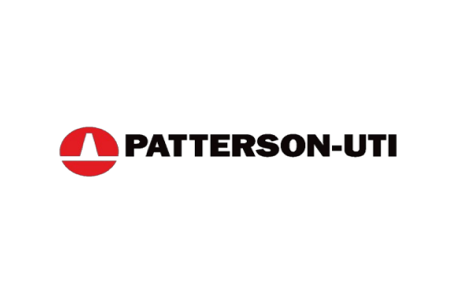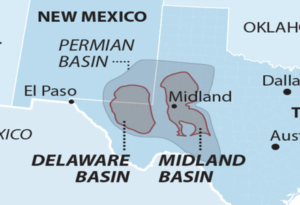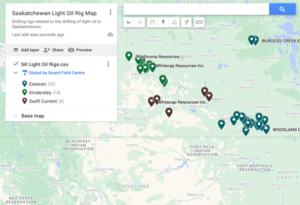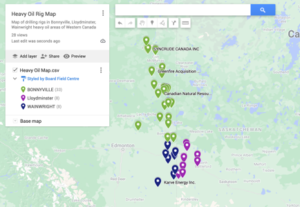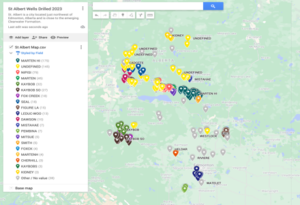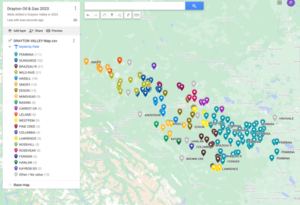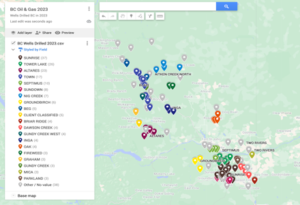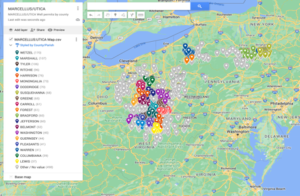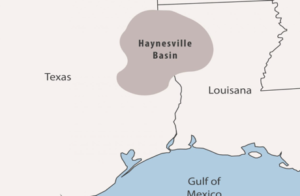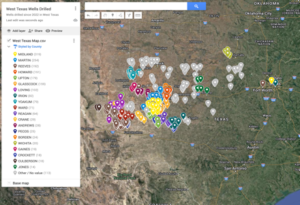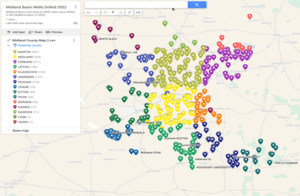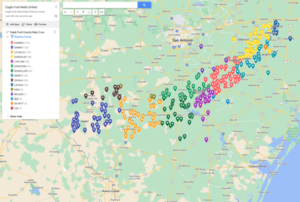As the energy industry evolves, power demand is becoming a critical growth driver—not just for traditional energy players but also for service companies positioned to capitalize on the shift toward electrification. Patterson-UTI Energy Inc. (NASDAQ: PTEN) is making strategic moves in this space, leveraging its expertise in mobile power generation to support oilfield operations and capture new opportunities in power services.
While competitors rush to invest in power, Patterson-UTI is taking a measured, disciplined approach, ensuring strong returns for investors and integrating power solutions with its existing drilling and completions services.

Power as a Core Competency
Patterson-UTI isn’t new to power generation—it’s been an essential part of the company’s oilfield services business for decades.
- The company operates nearly 150 MW of power to support electric frac fleets.
- Patterson-UTI’s drilling operations historically required more than 500 MW of power, giving them deep expertise in managing energy solutions in remote locations.
- Their CNG and fuel gas blending technologies provide an edge in integrating natural gas into power solutions for oilfield applications.
This longstanding experience positions Patterson-UTI as a key player in the growing demand for off-grid power solutions in oil & gas.
The Growing Demand for Off-Grid Power
One of the biggest challenges in oil & gas development today is reliable power access. Many drilling, production, and midstream facilities in remote areas lack access to grid electricity, creating demand for mobile power generation.
The Permian Basin Power Gap
The Permian Basin, the heart of U.S. shale production, is experiencing explosive power demand growth.
- Industry estimates suggest the Permian will require an additional 4 gigawatts (GW) of off-grid power over the next 10 years.
- Much of this demand will come from production sites, midstream infrastructure, and E&P electrification projects.
Patterson-UTI recognizes this opportunity but is carefully evaluating its approach, ensuring strategic investments that generate strong returns.
Patterson-UTI’s Three-Tiered Power Strategy
The company is segmenting the power market into three distinct applications, ensuring tailored solutions for each segment:
1. Power for Frac Operations
- High-capacity gas turbines are the preferred power source for electric frac fleets.
- Patterson-UTI currently leases turbines but may consider ownership if it makes financial sense.
- The company’s Emerald natural gas-powered frac fleet is expanding, with over 200,000 horsepower expected by mid-2025.
2. Power for E&P Production and Midstream Facilities
- Many production pads and midstream compression stations are in off-grid locations.
- Patterson-UTI is evaluating natural gas reciprocating engines for smaller-scale power needs.
- The company aims to integrate power generation with its existing oilfield services, including:
- Microgrid engineering
- Battery storage
- Real-time power monitoring
- CNG delivery and fuel gas blending
3. Power for Data Centers? Not Yet
- AI-driven data centers are creating huge power demands, requiring 500 MW or more per facility.
- While some energy companies are exploring data center power generation, Patterson-UTI sees this as a capital-intensive market with high competition from turbine manufacturers.
- Instead, they plan to focus on oil & gas applications, where they have a competitive edge.
A Disciplined Approach to Capital Deployment
Unlike some competitors who are rushing into power investments, Patterson-UTI is being selective:
- The company will not enter the low-margin generator rental business.
- Instead, it aims to integrate power solutions with its existing drilling and completions businesses.
- Investments will be organic, meaning Patterson-UTI will develop power capabilities in-house rather than overpaying for acquisitions.
- The company sees potential for power services to become a separate business unit in the future, but only if the market justifies it.
Natural Gas-Powered Equipment is Key
- Demand for natural gas-powered frac equipment is rising, and Patterson-UTI’s Emerald fleet is already fully booked for Q2 and Q3 2025.
- 80% of Patterson-UTI’s active frac fleet can run on natural gas, helping operators reduce fuel costs.
- The company is actively testing new fuel gas blending technologies to improve diesel displacement efficiency.
The Long-Term Outlook: Positioned for Growth
The long-term power strategy aligns with major industry trends:
- More oilfield electrification as E&Ps seek to lower emissions and improve operational efficiency.
- Expanding U.S. LNG exports will drive higher natural gas demand, increasing drilling and completions activity.
- Rising power demand in the Permian presents a major growth opportunity for power solutions.
Patterson-UTI is positioned to capitalize on these trends while maintaining a disciplined capital approach.
Final Thoughts: A Smart Play for Long-Term Growth
Patterson-UTI’s power strategy is focused, disciplined, and aligned with its core strengths. Rather than chasing high-cost acquisitions or unproven markets, the company is building on its existing expertise in drilling, completions, and natural gas solutions to create a sustainable, profitable power business.
While some competitors rush into power generation, Patterson-UTI is taking a measured approach—one that prioritizes investor returns and long-term growth.
With Permian power demand rising and oilfield electrification accelerating, Patterson-UTI is well-positioned to lead the next phase of energy services innovation.
Key Takeaways:
✅ Patterson-UTI has decades of experience in mobile power generation and currently operates 150 MW+ of power assets.
✅ The Permian Basin is facing a 4 GW power gap over the next decade, creating huge opportunities for off-grid power solutions.
✅ The company is focusing on power solutions for oilfield applications rather than chasing high-cost data center opportunities.
✅ Natural gas-powered frac fleets are in high demand, and Patterson-UTI’s Emerald fleet expansion is a strategic advantage.
✅ A disciplined, measured approach to power investments will allow the company to maximize shareholder returns without overextending into risky markets.
Patterson-UTI is not just following the energy transition—it’s leading it by integrating natural gas, power, and oilfield services into a high-value, differentiated offering.

